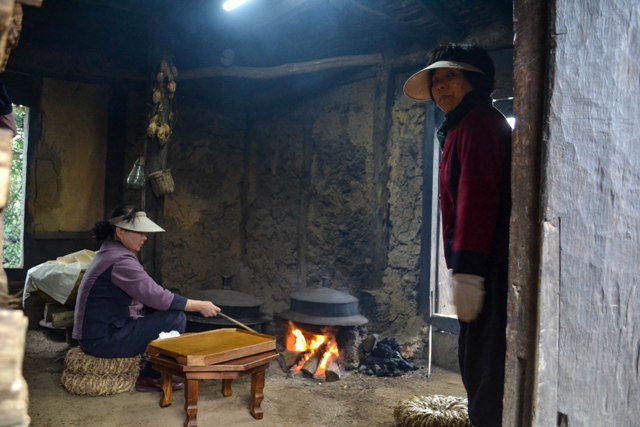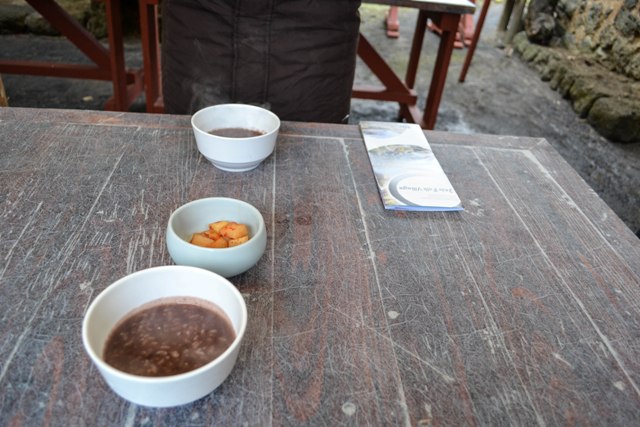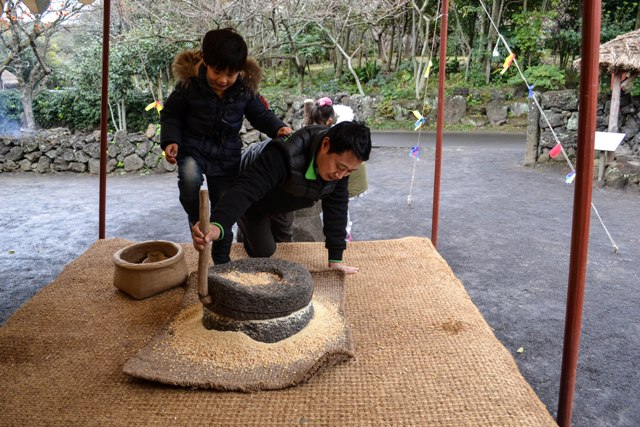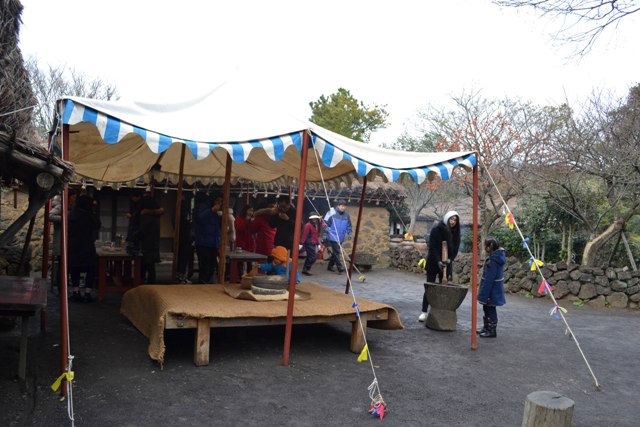|
| |
 |
|
| The cook makes some patjuk at Jeju Folk Village for Dongji. Photo by Melanie Couchman |
With sunrise at 7:34 am and sunset at 5:30pm, Dec 21 marked the shortest day of the year with nearly 14 hours of darkness. The winter solstice, known as “Dongji” in Korean, was celebrated in the traditional way at Jeju Folk Village in southeast Jeju, eating “patjuk,” or red bean porridge.
As we turned the gate and entered the village, we were immediately taken back in time. The grounds are huge and hold an abundance of recreated scenes reflecting 19th-century Jeju including traditional houses, school playgrounds, and even a prison. Not far from the entrance we found five to six women hard at work preparing in a traditional kitchen.
According to legend, Dongji was a very selfish and greedy man who would, in the middle of the night, go into the people’s homes and steal whatever he wanted. Because the winter solstice is the longest night of the year, special precautions had to be taken to protect against him.
Practiced for some 600 years, many Koreans believe that eating patjuk on the winter solstice protects against evil spirits for the entirety of the year, before the food is eaten again to recharge the next solstice.
Red beans are believed to block harmful spirits in Korea and during big events or special ceremonies is it common to see red beans sprinkled around buildings or the area in general. Couples sometimes scatter the beans on their newlywed bed for good luck or fortune. But in general, red beans are used to keep us safe from evil throughout the year.
When the woman brought out the two small bowls we had ordered, we enjoyed the creamy, salty, warm patjuk amongst a crowd of five or six others hoping for protection for the year ahead. The Jeju Folk Village anticipated around 900 visitors over the two days it provided the patjuk and despite the many servings needed, the women seemed to be enjoying the many hours cooking in the tiny, dark, traditional kitchen.
Making patjuk
Patjuk is fairly simple to cook and can be made right at home. First, soak rice in water for 1 hour. Then add red beans to the rice and water, and boil the mixture for about another hour. Once the texture has turned to the desired consistency, add small pieces of rice cake and voila! The patjuk is ready to be enjoyed.
All images by Melanie Couchman
|























